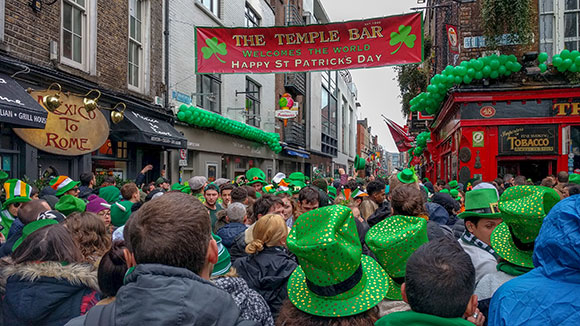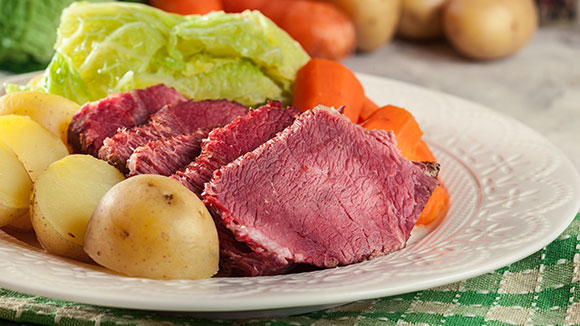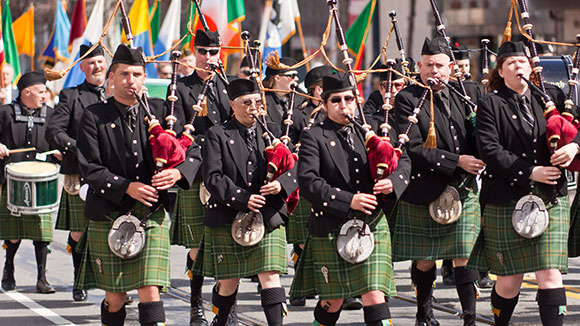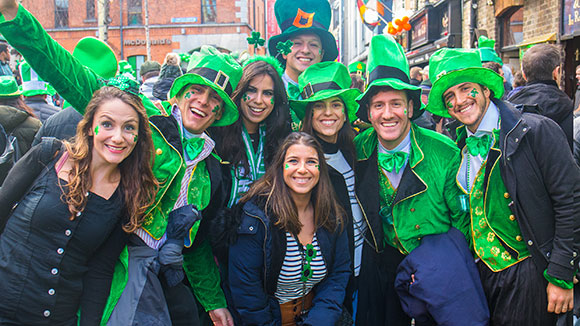St. Patrick's Day – a day that’s become a trope of leprechauns, green beer, and pinching those not donning the signature green of the Emerald Isle. Yet, amidst the blarney and shenanigans, there is actually a deep, rich, even controversial history to the holiday. Let’s celebrate the rich Irish culture and heritage, diving into some of the most popular St. Patrick’s Day traditions and determining what’s legend or legit.

(Ranieri Pieper / Shutterstock)
As we gear up for another round of St. Patrick's Day festivities, before you don your leprechaun hat and dig into some corned beef, let’s pause and examine some of the holiday’s popular and beloved “traditions.” Sure, we all love a good tale of pots of gold at the end of rainbows and mischievous little leprechauns guarding them, but let's be real for a moment. St. Patrick's Day is about so much more than the whimsy—let’s not forget that the holiday can also be a celebration of Ireland's rich history, vibrant culture, and enduring spirit. Like many other holidays, it can also have a dark, controversial past that has faded away over the centuries.
So let’s take a moment and peel back the layers of blarney to reveal some fascinating truths behind this beloved holiday. Grab a cuppa, kick back, and let’s see how many of these St. Patrick’s Day traditions you can tell are either whimsy legends or legit facts.
St. Patrick was Irish.
LEGEND. He was actually from Roman Britain, with some debate on his actual birthplace – some cite evidence of Cumbria, England, while others claim Scotland or even Wales. At age 16 was kidnapped and brought to Ireland as a slave.
St. Patrick banished snakes from the Emerald Isle.
LEGEND. Legend has it that St. Patrick stood on an Irish hillside and delivered a sermon that drove the island’s serpents into the sea. While it’s true that the Emerald Isle is mercifully snake-free, chances are it’s due to geological reasons.

The shamrock is an important symbol to Ireland, not just for St. Patrick’s Day.
LEGIT. It’s true that St. Patrick used the shamrock in his teachings of Christianity and was, arguably, the source of its importance, but the shamrock is actually the national symbol of all Ireland.
Green has always been associated with St. Patrick’s Day.
LEGEND. The Irish countryside may be many shades of green, but knights in the Order of St. Patrick wore a color known as St. Patrick’s blue. When the Irish Rebellion occurred in 1798 and the British wore red, the Irish chose to wear green, often singing the song “The Wearing of the Green.” From then on, the color green was synonymous with pretty much anything related to Ireland.

Corned beef is a classic St. Patrick’s Day dish.
LEGEND. It’s more of an Irish-American or Canadian tradition. In the late 19th century, Irish immigrants in New York City’s Lower East Side supposedly substituted corned beef, which they bought from their Jewish neighbors, in order to save money. In Ireland, a type of bacon similar to ham was the customary protein on the holiday table.
St. Patrick's Day is traditionally a huge, raucous party.
LEGEND. The name kind of says it all - Saint Patrick's Day. It’s a feast day for a Catholic saint, and it really wasn't very popular beyond Ireland. Even then, Catholics in Ireland honored St. Patrick with prayer and quiet reflection. It wasn’t even until the 1980’s that businesses – including pubs – were allowed to be open on the day. St. Patrick’s Day, as we know it today, started in America in the late 19th and early 20th century, when large numbers of newly arrived Irish immigrants began using the day as a way to celebrate their Irish heritage.

(Mariusz S. Jurgielewicz / Shutterstock)
There were St. Patrick's Day parades in America for years before there was ever one in Ireland.
LEGIT. The first St. Patrick’s Day parade occurred in New York City in 1782, and it became an annual event in 1848. Boston and Chicago were also some of the first American cities to host annual parades. Meanwhile, it wasn’t until 1931 that Ireland held an official St. Patrick’s Day parade.
Some people actually view St. Patrick’s Day as a dark day in history and don’t like to celebrate it.
LEGIT. There's some debate around St. Patrick's conversion of Ireland's pagans to Christianity. While some view it as a positive aspect of history, others critique it as an imposition of foreign beliefs onto indigenous practices. Questions arise about the preservation of Irish culture and the motivations behind the conversion efforts, sparking ongoing discussions about religious imperialism and the legacy of colonization.

(David Ardura / Shutterstock)
As with every culture in our melting pot of a country and their respective holidays, St. Patrick’s Day and the Irish culture are much more than what appears on the surface. So, while you celebrate this St. Patrick’s Day, take some time to appreciate the rich, lively, fascinating Irish culture, and no matter how you celebrate, please do so safely! Sláinte!